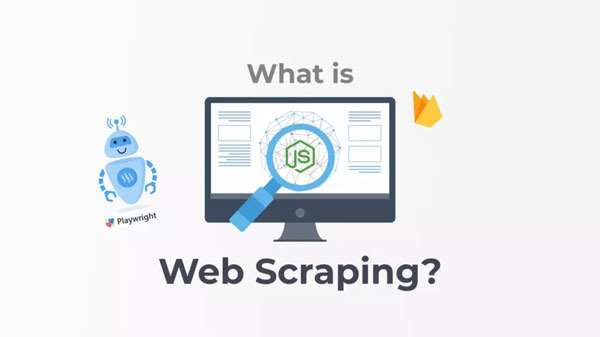- by SEO

Web scraping has come a long way since its inception, evolving into a sophisticated technique that plays a crucial role in data collection across various industries. As the digital landscape Web Scraping Tool continues to change, so too do the tools and technologies used for scraping data from the web. In this article, we’ll explore the evolution of web scraping, current trends, and future technologies that are shaping this field.
A brief history of Web Scraping
Web scraping began in the early days of the internet when users manually copied and pasted data from websites. As demand for automated data collection grew, developers began creating scripts to extract information programmatically. Early tools were rudimentary, often requiring extensive programming knowledge.
The introduction of more advanced libraries, such as Beautiful Soup and Scrapy in Python, revolutionized the field by making web scraping more accessible. These libraries provided frameworks that simplified the process of sending requests, parsing HTML, and extracting relevant data. Today, web scraping is an integral part of many business strategies, enabling organizations to gather insights efficiently.
Current Trends in Web Scraping
- Increased Use of Artificial Intelligence and Machine Learning
Artificial intelligence (AI) and machine learning (ML) are transforming the way data is scraped and processed. These technologies allow for more intelligent data extraction methods that can adapt to changing web structures and content.
Smart Data Extraction: AI-powered tools can recognize patterns in data, making it easier to extract relevant information from complex web pages.
Natural Language Processing (NLP): NLP enables the analysis of unstructured data, such as user reviews or social media posts, providing deeper insights into customer sentiment.
- Headless Browsers and Advanced Automation
Headless browsers, which allow for automated browsing without a graphical interface, are becoming increasingly popular in web scraping. Tools like Puppeteer and Playwright enable developers to control headless browsers to scrape data from sites that rely heavily on JavaScript.
Dynamic Content Handling: As more websites use JavaScript frameworks for content rendering, headless browsers are essential for accessing and extracting dynamic content.
Enhanced User Interaction Simulation: These tools can simulate user interactions, such as scrolling and clicking, making it possible to scrape data that requires user engagement.
- Cloud-Based Scraping Solutions
The rise of cloud computing has led to the development of cloud-based web scraping services that offer scalability and efficiency. These solutions enable users to deploy scrapers on powerful cloud infrastructure without managing local servers.
Scalability: Businesses can easily scale their scraping operations to handle large volumes of data without worrying about hardware limitations.
Cost Efficiency: Cloud-based services often operate on a pay-as-you-go model, making it more cost-effective for businesses to scrape data as needed.
- Focus on Ethical Scraping and Compliance
As awareness of data privacy and ethical considerations grows, there is a stronger emphasis on responsible web scraping practices. Organizations are increasingly aware of the legal implications of scraping data without consent.
Robust Compliance Frameworks: Companies are developing internal guidelines and compliance frameworks to ensure that their scraping activities align with legal regulations, such as GDPR and CCPA.
Transparency and Accountability: Businesses are also adopting more transparent practices, informing users about data collection methods and purposes.
Future Technologies to watch
- Advanced Data Structuring and Validation
As the volume of scraped data increases, there will be a growing need for technologies that can structure and validate this data efficiently. Innovations in data management will enhance the usability of scraped information.
Automated Data Cleaning: Future tools will incorporate AI-driven data cleaning processes that automatically detect and rectify inconsistencies or errors in the data.
Real-Time Data Structuring: As businesses require immediate insights, technologies that can structure and validate data in real time will become essential.
- Enhanced Proxies and Anti-Bot Solutions
As web scraping becomes more prevalent, websites are implementing advanced anti-scraping measures. Future technologies will focus on overcoming these challenges while maintaining compliance with legal standards.
Smart Proxy Solutions: New proxy technologies will offer more effective rotation and management of IP addresses, reducing the likelihood of being blocked while scraping.
Behavioral Mimicking: AI will enable scrapers to mimic human browsing behaviors more effectively, allowing for smoother interactions with websites that have stringent anti-bot measures.
- Integration with Business Intelligence Tools
As organizations seek to turn raw data into actionable insights, the integration of web scraping tools with business intelligence (BI) platforms will become increasingly important.
Seamless Data Flow: Future scraping solutions will allow for direct integration with BI tools, enabling users to visualize and analyze scraped data without complex import/export processes.
Enhanced Analytics: Companies will be able to leverage scraped data alongside their internal datasets for richer analytics and more informed decision-making.
Conclusion
The evolution of web scraping has been marked by significant advancements in technology, driven by the growing need for data in various industries. As we look to the future, emerging trends such as AI integration, cloud-based solutions, and ethical considerations will shape the landscape of web scraping. Organizations that stay ahead of these trends and adopt innovative technologies will be better positioned to leverage data for strategic insights, maintaining a competitive edge in an increasingly data-driven world. Whether through enhanced automation or smarter compliance frameworks, the future of web scraping promises exciting developments that will transform how businesses gather and utilize information.